The forex market is caught in an inflation/deflation three-way tug of war between the US outlook, falling covid reopening inflation and a rapidly slowing China. Last night the latest US CPI reading took precedence but the battle is ongoing. DXY fell and EUR rebounded:
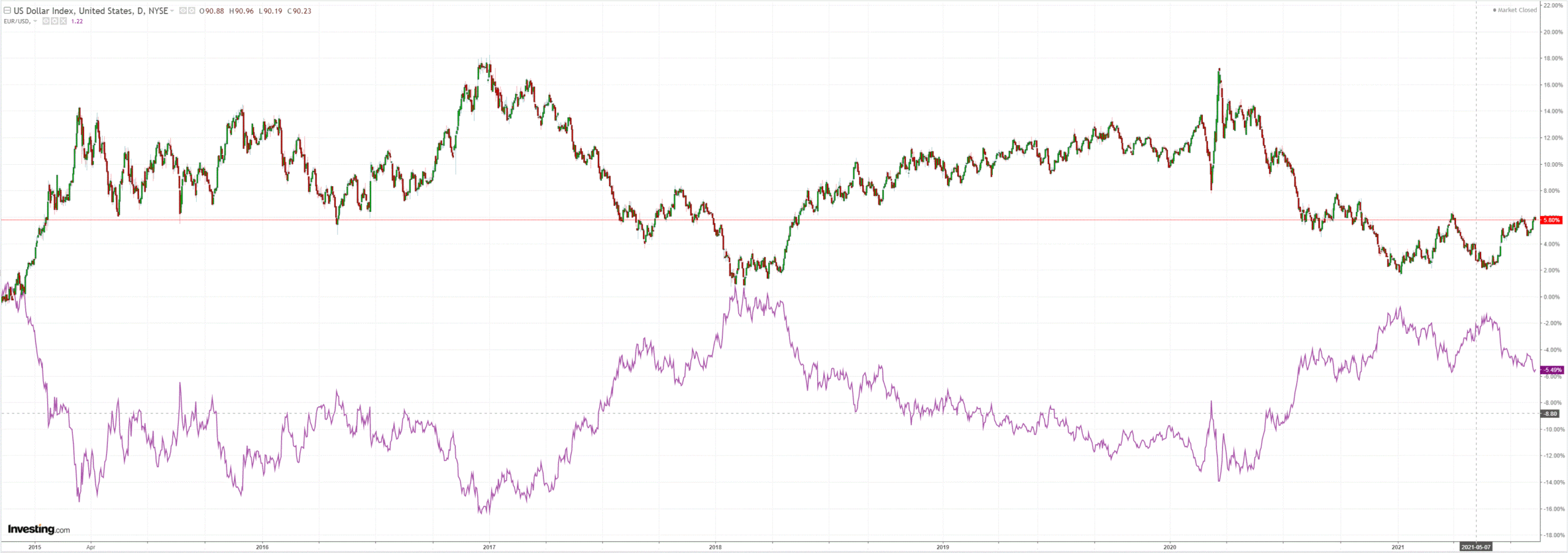
The Australian dollar was up on all crosses:
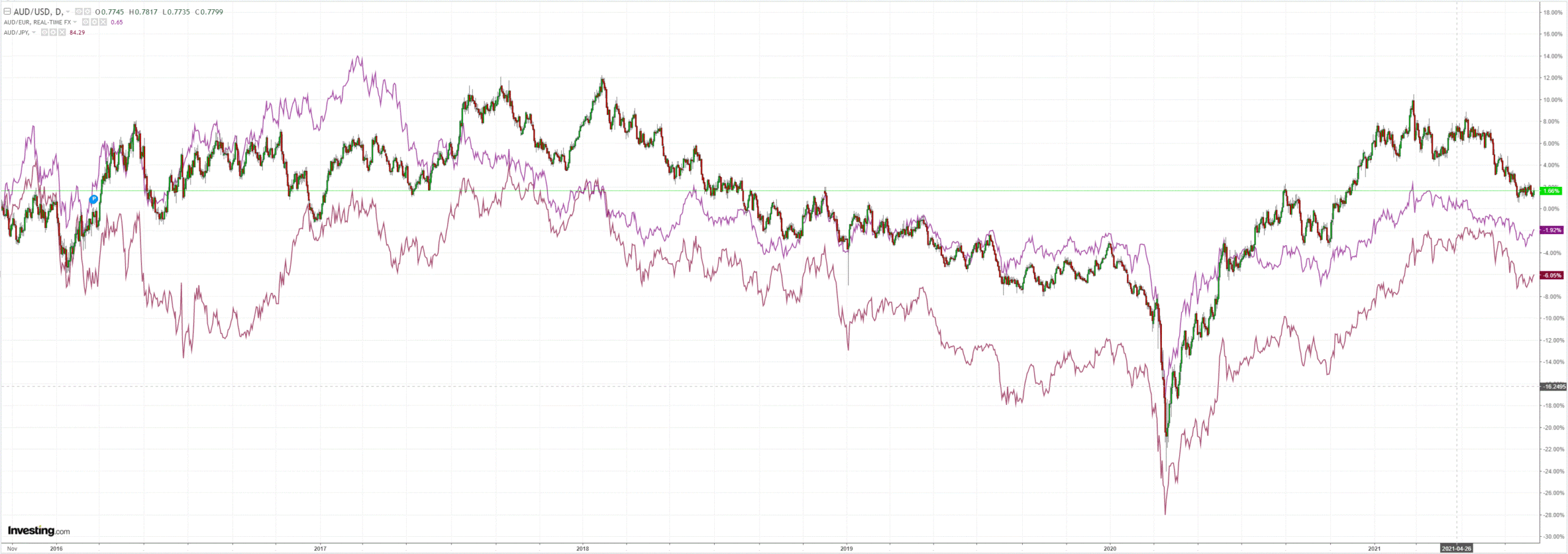
The falling DXY did its usual trick with rising commodities:
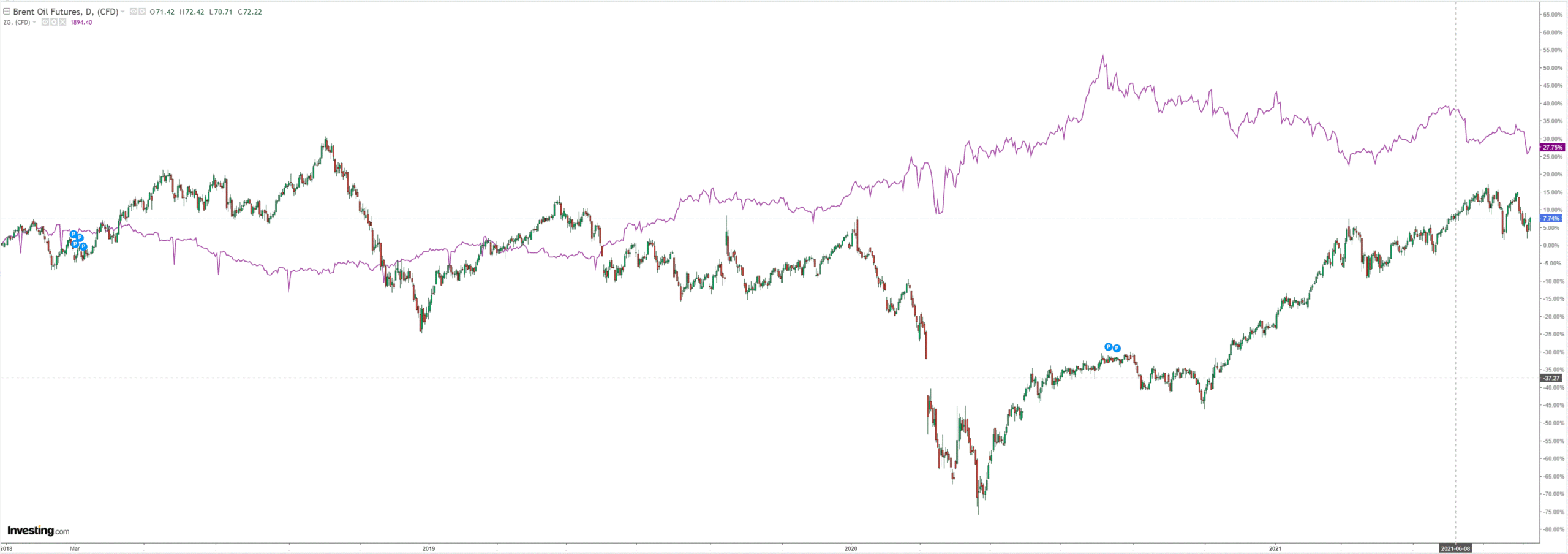
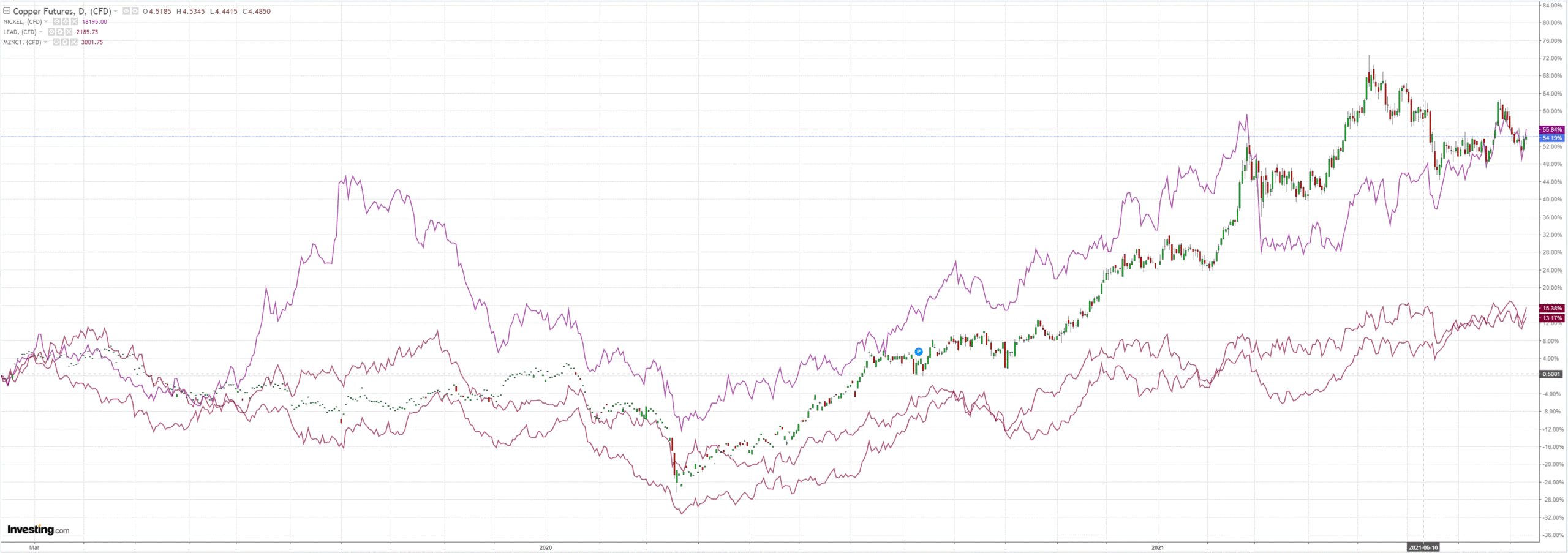
And miners. Though the major iron ore producers fell:
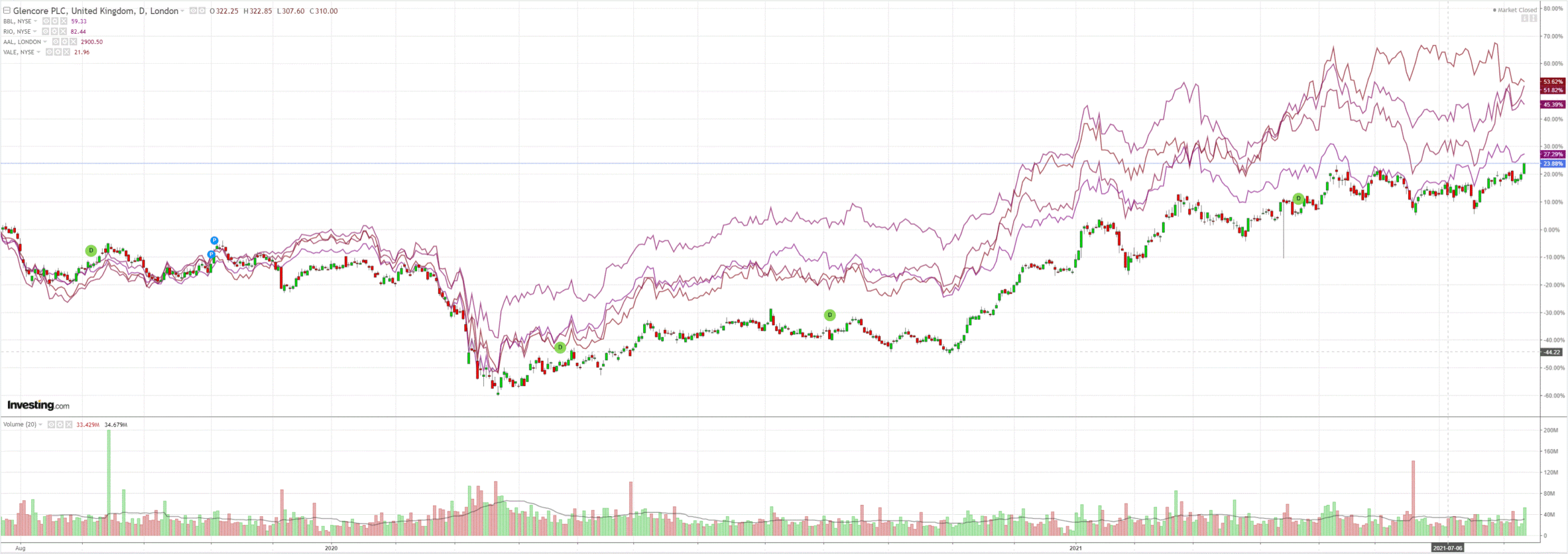
EM stocks are still at the cliff:
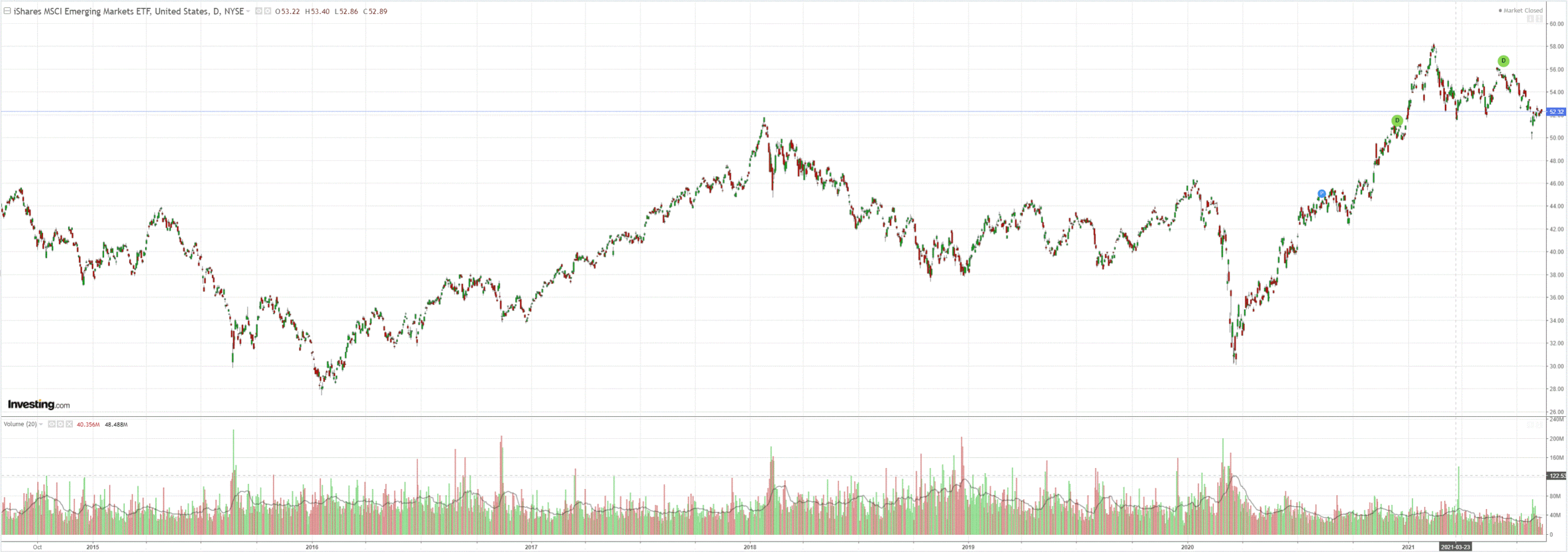
But junk improved:
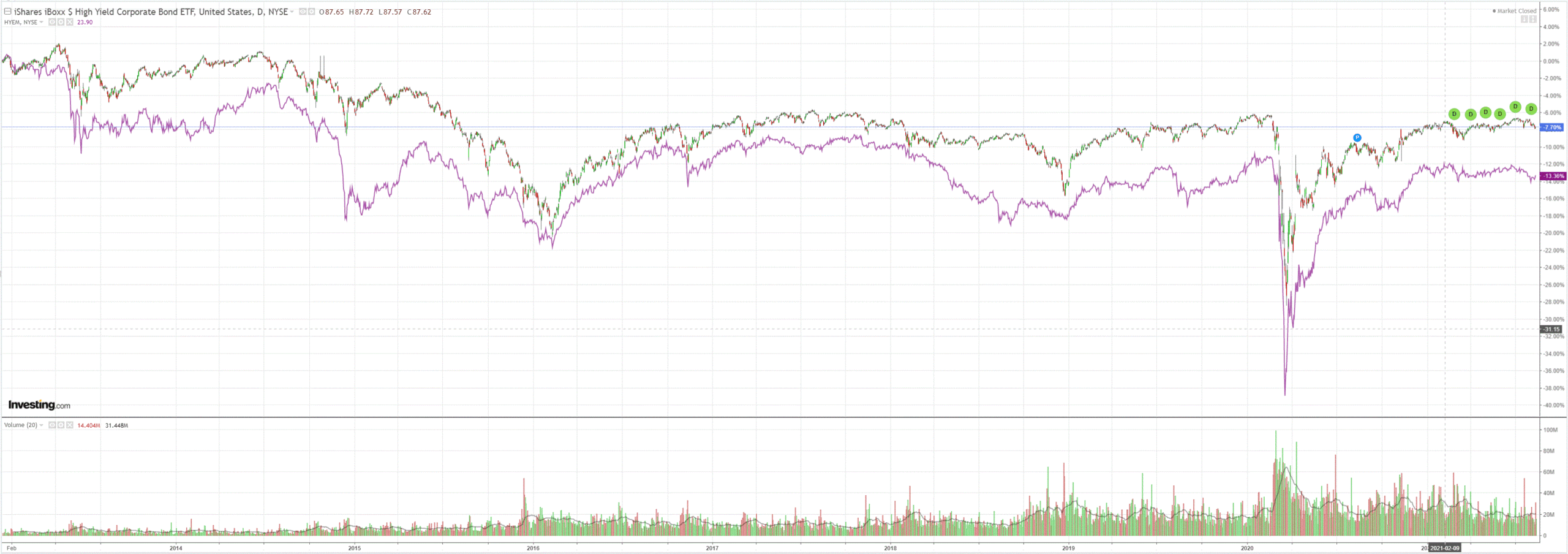
Yields rolled:
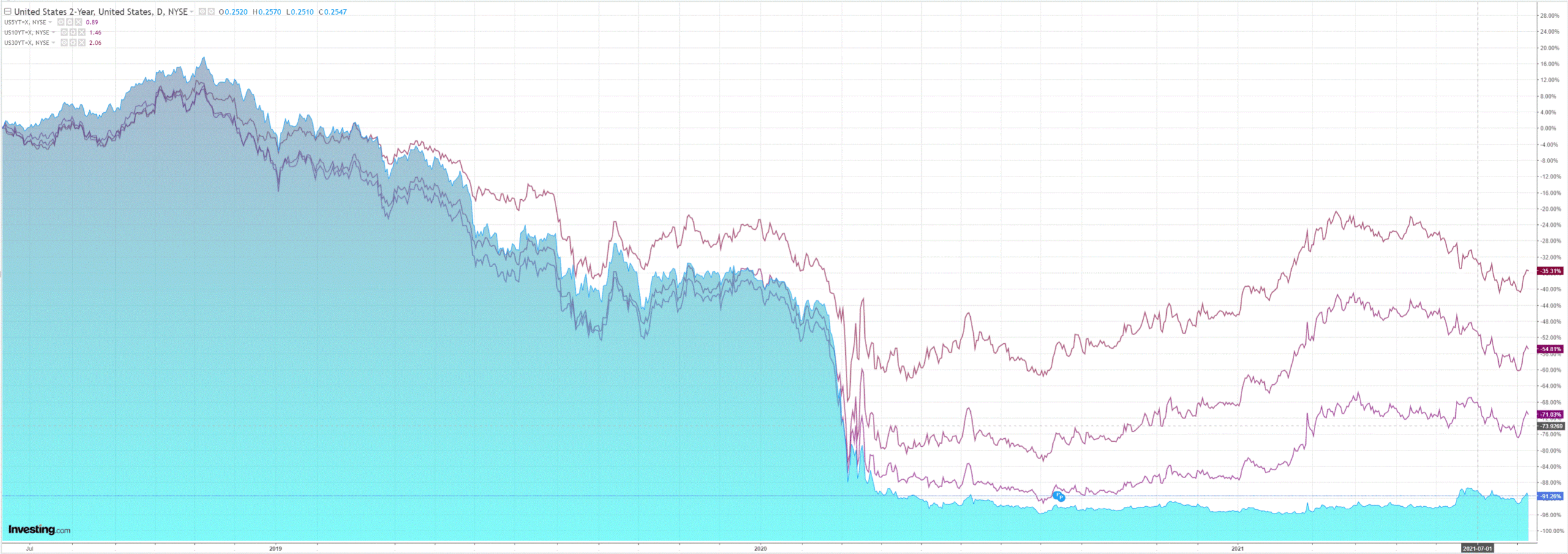
But value still outdid growth:
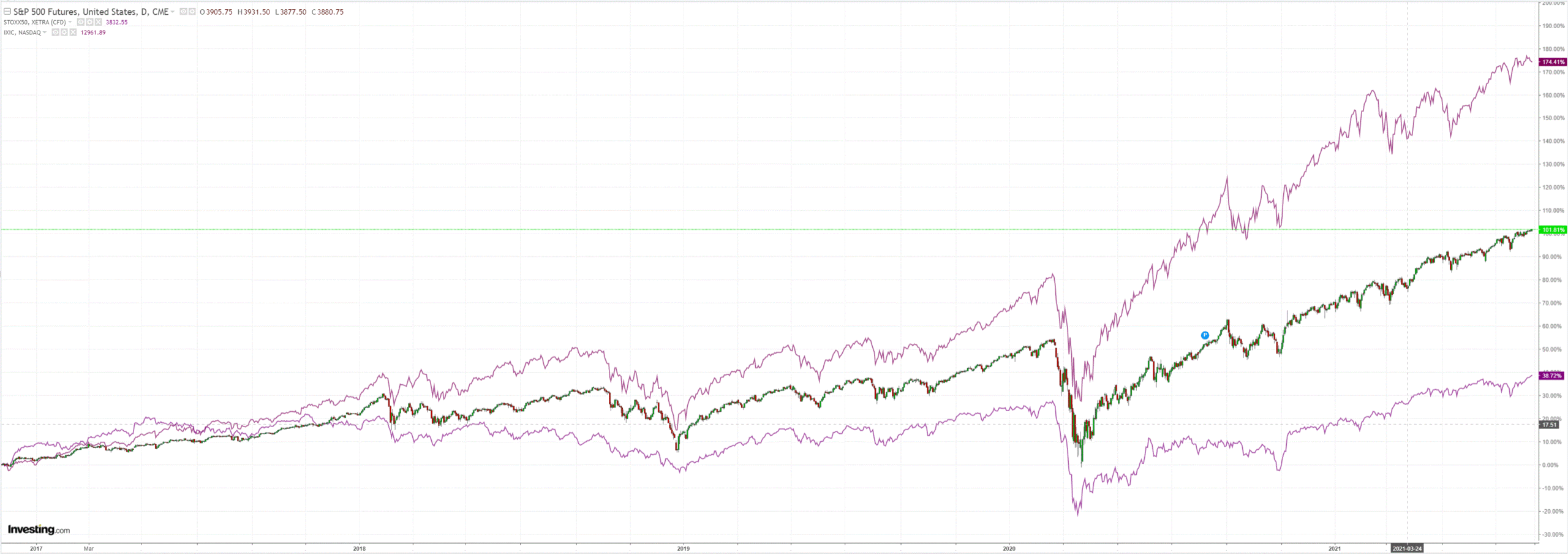
Westpac has the data:
Event Wrap
US CPI inflation in July was 0.5% (vs 0.5% expected, 0.9% prior), for an annual pace of 5.4% (5.4% prior). Core inflation (ex-food and energy) slightly undershot expectations at 0.3% (vs 0.4% expected, 0.9% prior), for an annual pace of 4.3% (4.5% prior). While showing some moderation from June, the pace remains strong. The surge in airfare and vehicle prices appears to have peaked, but many other components are showing persistent strength.
FOMC member Kaplan (hawk, non-voter) said the Fed has made significant progress such that QE tapering should be announced in September and initiated in October. He said the stimulus is not helping the economy since it influences demand, whereas supply shocks are currently dominating. George (hawk, voter) said it is time to start normalising policy, in a “transition to more neutral settings”. She said there has been a string of “pretty good” employment numbers, but noted that structural changes could alter full employment. She also said that an above 2% pace of inflation may have been achieved, noting price expectations are firming. Barkin (hawk, voter) said the FOMC is “closing in” on QE tapering and he would favour that. He did not give a timetable, but wants to return to a “normal environment as quickly as the economy allows”, saying it is credible to think the Fed will get there in the next few months. Evans (dove, voter) spoke yesterday, saying he wants to see a few more months of employment numbers to judge whether enough progress has been made on the jobs front and before deciding to start reducing asset purchases: “We should not pre-emptively end a strong improvement in the labour market because somebody is getting nervous about inflation. I am going to be very regretful if we sort of claim victory on averaging 2% and then find ourselves in 2023 with about a 1.8% inflation rate…that would be a challenge for our long run framework. ”
Event Outlook
Australia: August MI inflation expectations will gauge households’ views on the recent strength seen in food, fuel and dwelling prices.
New Zealand: Although the housing market has somewhat cooled since loan-to-value restrictions were reimposed in March, indicators suggest that the July REINZ house sales and prices will reflect a reasonably active housing market. Available listings have fallen to new lows, as homes are being snapped up faster than they are entering the market.
Westpac expects that the RBNZ’sQ3 Survey of inflation expectations will continue to push higher this quarter. The latest survey comes hot on the heels of the much stronger than expected June quarter inflation result. Recent months have also seen firm indications for domestic activity and widespread reports of growing cost pressures.
Finally, Westpac forecasts a 0.7% rise in the July food price index as fresh food prices remain firm.
UK: The market is forecasting a 4.8% gain for Q2 GDP, with a robust outlook ahead given the significant easing of restrictions in July. Ahead of the June update, the trade balance has begun to stabilise following a period of Covid/Brexit volatility.
Euro Area: The market anticipates a -0.2% decline for June industrial production; the switch from goods consumption to services spending may see a more subdued profile for output going forward.
US: The July PPI will offer insight into whether upstream price pressures are showing signs of easing (market f/c: 0.6%). Furthermore, initial jobless claims for the week ended 7 August should print around 375k, with labour shortages and the cessation of unemployment benefits to accelerate the downtrend.
The US CPI came in much softer than expected where it counts. BofA:
Core CPI rose 0.3% (0.33% unrounded) mom in July, coming in a touch below consensus at 0.4% mom and cooling off notably following the prior three months of average 0.8% spikes. Unfavorable base effects led to the % yoy rate dropping to 4.3% (4.27% unrounded) from 4.5% yoy in June. Headline CPI came in stronger at 0.5% (0.47% unrounded), boosted by a 1.6% pop in energy and 0.7% jump in food, which kept the %yoy unchanged at 5.4%.
This month revealed significant cooling in transitory inflation. First on the goods shortages theme: used car prices edged up 0.2% mom, though new cars were much stronger at 1.7% mom. Given the signal from wholesale used car prices, which began to turn lower in June, we expect negative readings in CPI used cars beginning next month. Car/truck rental prices also plunged 4.6% mom following record gains in previous months, likely reflecting the start of a negative payback. Price pressures were mixed across commodities: household furnishings/supplies edged up 0.1% mom, apparel was flat, and both medical commodities and other goods rose 0.2% mom. Meanwhile, recreation and education/communication commodities saw stronger readings of 0.5%and 0.8%, respectively.
Stickier sources of inflation remained solid. OER rose 0.29% mom in July and rent of primary residence rose 0.16% mom, albeit both a touch softer than in June. Medical care services picked up 0.3% mom, after averaging-0.1% over the prior 3 months. Improved professional services (+0.4%) and hospitals (+0.5%) offset continued weakness in health insurance (-0.6%).
Bottom line, this report shows persistent inflation holding firm while transitory inflation ebbed and is likely to soften further going forward.
In short, the great US deflation has begun. There are some longer-term sticky areas like rent that will support it, plus the improving jobs market, and the Biden stimulus, so taper will advance anyway for now.
However, I remain of the view that a tsunami of commodity deflation is building in China and it will crest and fall upon the globe in short order. Taper only makes this worse as DXY holds a bid.
While those two forces are in play, the Australian dollar remains uniquely vulnerable, not least with the RBA forced back into to field with more printing as Australia sinks into COVID apartheid.

